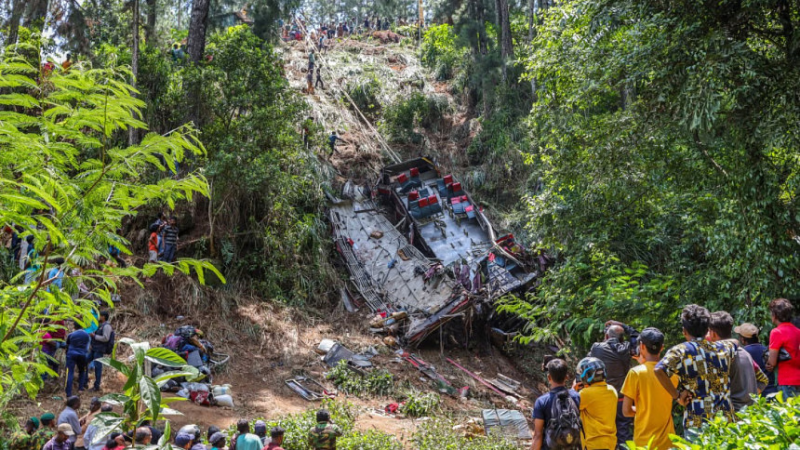- Trump considering military options on Greenland; Europe rejects |
- Fertiliser crunch threatens Kushtia’s onion boom despite high prices |
- Security Council Divided on United States' Venezuela Action |
- Over 1.53m voters register for postal balloting: Shafiqul Alam |
21 Dead in Bus Crash Carrying Pilgrims in Sri Lanka

Photo: AFP
A tragic bus crash in Sri Lanka on Sunday claimed the lives of at least 21 Buddhist pilgrims and left 24 others injured when the overcrowded vehicle plunged into a steep ravine. The crash, which occurred in the central Kotmale region, is one of the deadliest road accidents in Sri Lanka in decades, according to officials.
The bus, which was carrying approximately 70 passengers—about 20 more than its official capacity—was travelling along the island's notoriously dangerous winding roads. Early in the morning, the driver lost control of the vehicle, sending it careening off a cliffside road. The bus landed upside down in a tea plantation, with its roof and side panels torn off and many seats ripped from the floor.
Deputy Transport Minister Prasanna Gunasena, who visited the scene, confirmed the death toll and said that the injured had been rushed to two local hospitals for treatment. "The victims are being identified, and we are deeply saddened by this tragic loss," Gunasena said.
Investigators are now trying to determine whether the crash was caused by a mechanical failure or if the driver may have fallen asleep at the wheel. "We are still looking into the cause," a police official said, requesting anonymity.
According to one survivor, the bus began to lean to one side before the driver lost control, causing the vehicle to plunge down the precipice. The survivor, who was seated at the front, escaped with minor injuries and described the terrifying moment in a video shared with AFP.
The bus had been on a journey from the southern pilgrimage town of Kataragama to the central city of Kurunegala, covering a distance of around 250 kilometres (155 miles).
Sri Lanka’s roads are among the deadliest in the world, with around 3,000 road fatalities recorded annually. Sunday's crash ranks as one of the most devastating in recent memory, on par with a tragic accident in 2005 that killed 37 passengers.
Local residents played a crucial role in saving lives, helping to extract victims from the wreckage and rush them to nearby hospitals, which may have prevented the death toll from rising further.

